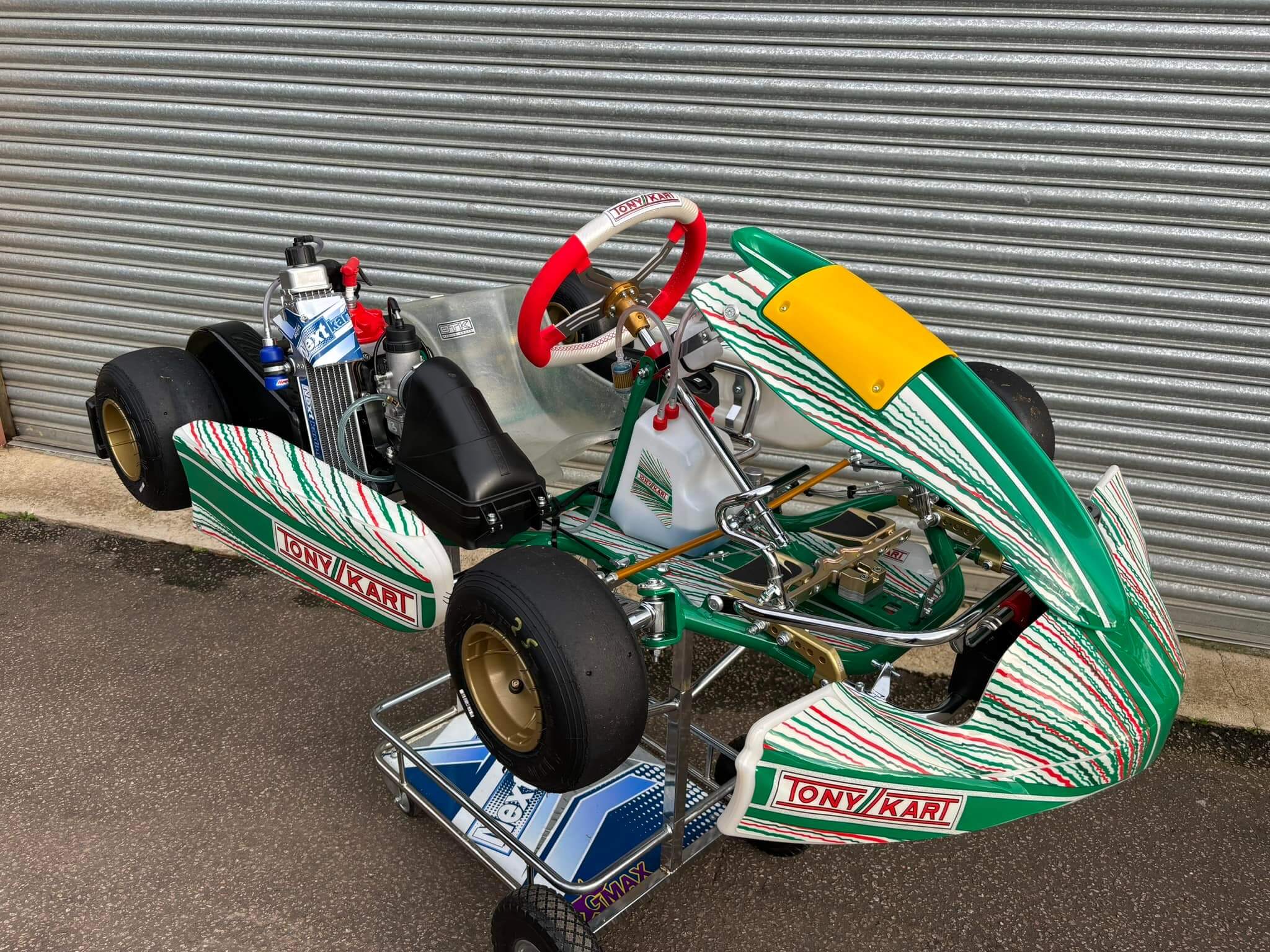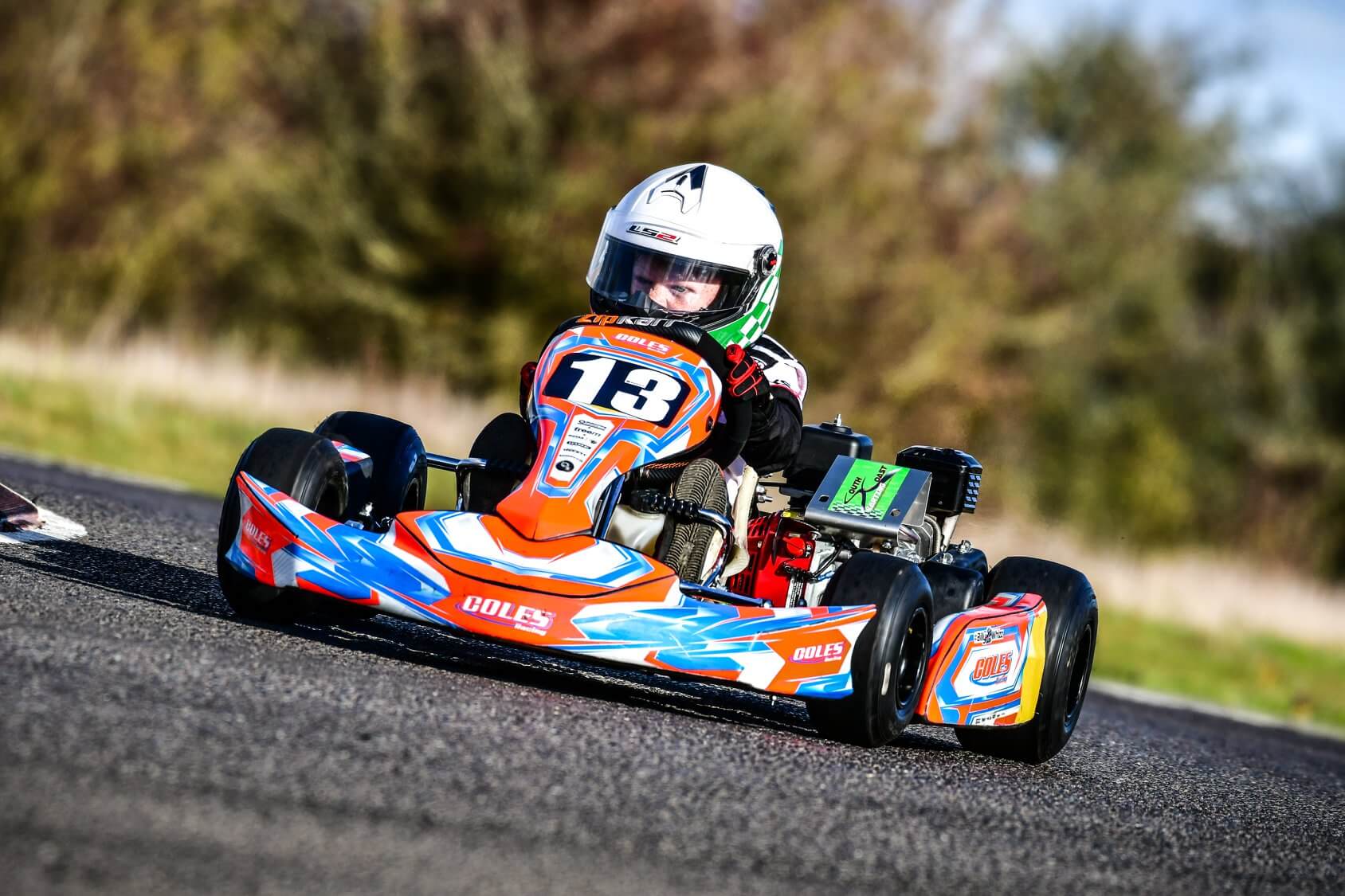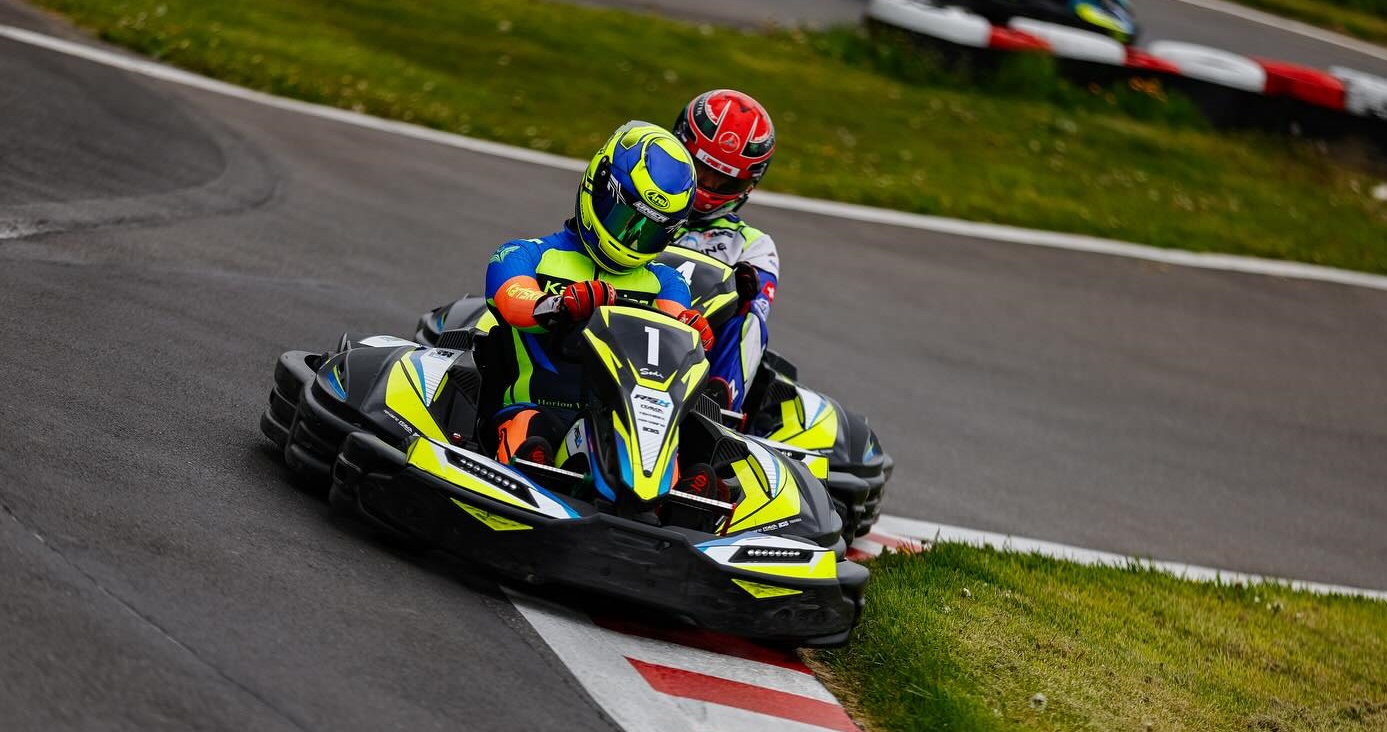Complete karting checklist: the list of essential equipment
By RobinB on 22 September 2025 KartingBefore hitting the track with your own kart, make sure you’ve forgotten nothing. This checklist reviews all the essential gear: documents, driver equipment, transport, tools and spare parts. You can also download the printable PDF list to prepare your outings with peace of mind, whether for two-stroke leisure or to start in competition 😉
Karting on track: paperwork 📃
To drive your own kart on a circuit, you must comply with the rules. In France, this generally means having an FFSA licence (insurance included) or, for occasional practice, a one-day participation permit. Depending on the type of licence, a medical check-up is not always required: you first fill out a health questionnaire and, depending on your answers, a medical certificate of no contraindication may be required 👨⚕️
ℹ️ An UFOLEP licence, which also includes insurance, may be accepted, but this is not guaranteed: check with the circuit before you go.
In addition to the licence, each circuit requires a track fee (per day, in a passbook or as a subscription). If you mostly drive at the same venue, it’s often cheaper to buy an annual track fee directly from the circuit. Also check the member rates offered to local ASK licence holders, which can reduce the cost of your practice sessions 👌
Essential Karting Driver Equipment

Unlike rental karting where the gear is provided, a driver who owns their own kart must invest in their own personal safety equipment. All the items listed below are mandatory in competition and strongly recommended for practice sessions to ensure safe leisure karting (especially with a high-performance 2-stroke kart 🔥).
See also: "What is the budget required to drive a competitive kart ?"
📍 Homologated full-face helmet
The helmet is your first line of protection: it must be full-face and approved (ECE 22-06/22-05, Snell or FIA). In practice, a good full-face motorcycle helmet is sufficient, as it meets the ECE standard required on circuits for leisure use. For young drivers, choose a specific children’s model (CMR/CMS), which is lighter.
See also: "What Age Can You Start Karting? (Leisure and Competition)"
Before each session, check its condition, fit and fastening. Choose a full visor (clear or tinted depending on light) and avoid non-approved paints/solvents that could weaken the shell.
📍 CIK-FIA approved karting suit
Mandatory in competition and required on most leisure circuits, a specific karting suit protects against slides, abrasion and friction burns. It is very different from an automotive racing suit (rally, circuit): those are designed for fire resistance but not for sliding wear, and their cut hinders the low driving position of a kart driver.
👉 Choose a CIK-FIA level 1 or 2 approved model (level 2 = maximum protection) and suited to your body shape for optimal freedom of movement.
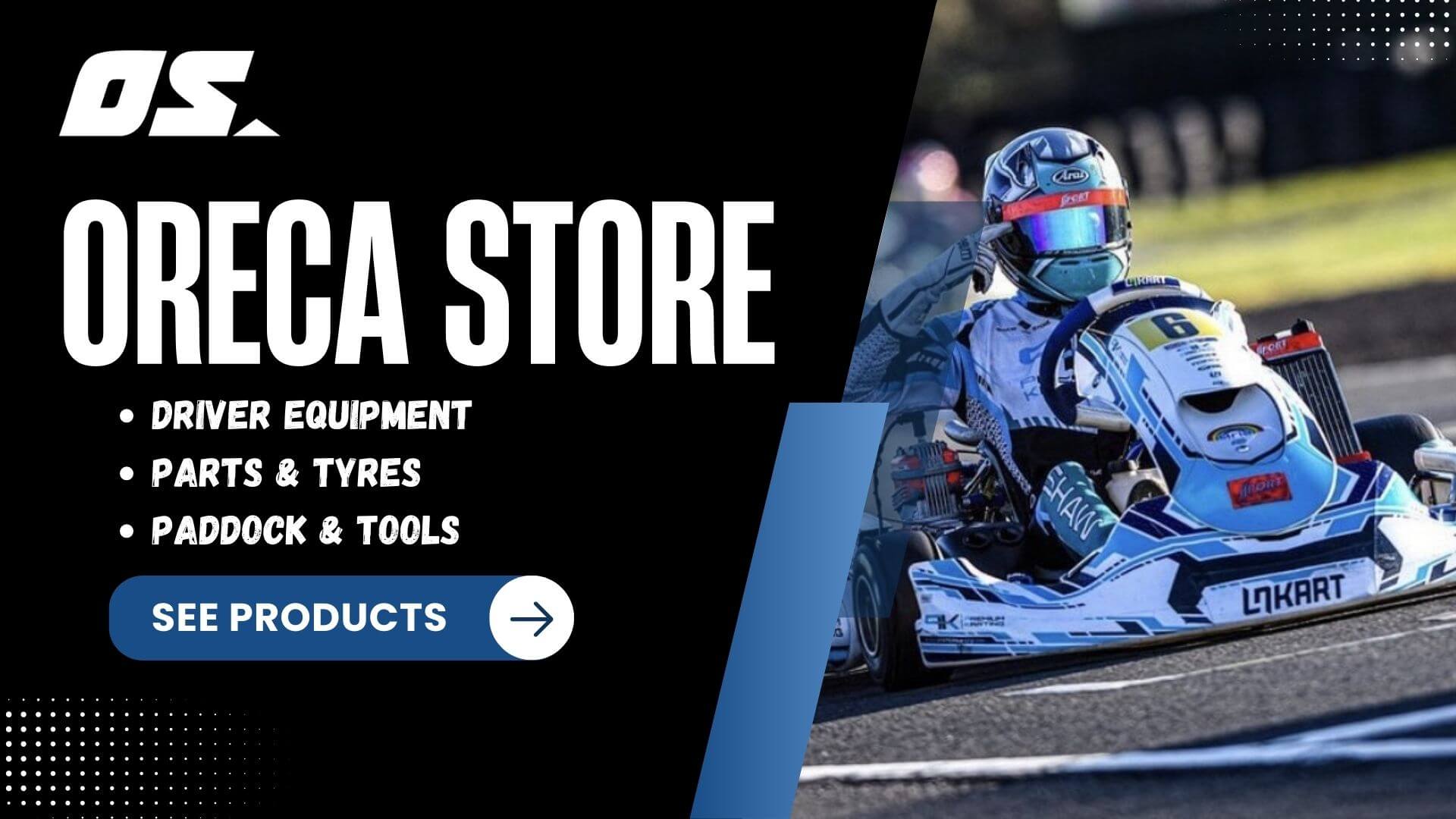
📍 Gloves and High-Top Shoes
Karting gloves: Reinforced gloves offering good grip on the steering wheel are essential. Whether in competition or leisure, your hands must be protected and must not slip. Choose gloves specifically designed for karting (or, if not available, motorsport gloves) that fully cover the wrists. They must fit your hands well to ensure excellent sensitivity and driving precision. They are expected to be durable (to prevent scratches in case of impact) while providing optimal grip on the wheel. There are glove models designed for rain or cold, which can be useful depending on conditions 🥶
High-top shoes: High-top karting boots (rising above the ankle) with a thin sole are also indispensable. Kart shoes protect your ankles while offering excellent pedal feel. The ankle is particularly stressed in karting, hence the importance of good protection and support. Specific karting boots, lightweight and durable, will provide the comfort and safety you need: thin sole to feel the pedals, lateral reinforcements for the ankle, and secure closure. This gloves/boots duo ensures comfort and precision at the wheel.
Additional Recommended Protections in Karting 🛡️
In addition to the basic equipment, there are body protections which, while not systematically mandatory for adults, are highly recommended for safe driving. This includes the rib protector vest, the neck brace, as well as knee pads and elbow pads 👌
📍 Rib Protector (Chest Protection Vest)
This is a shell or padded vest worn under the suit. Its role is to absorb side impacts on the ribs and protect the chest from chassis vibrations. The driver's ribs are particularly exposed in karting, and vibrations and shocks can cause intercostal injuries. The rib protector stiffens this area and effectively prevents fractured ribs or cartilage pain 🤗
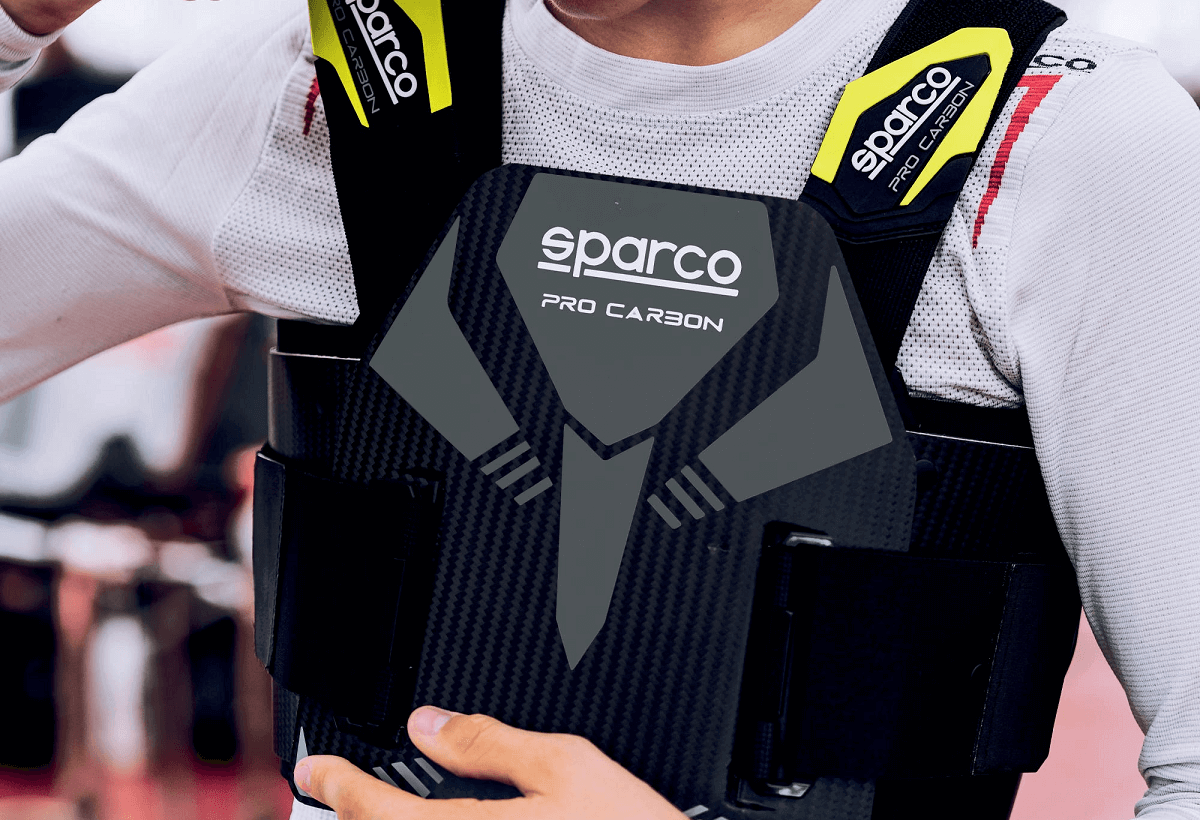
In international competition, the rib protector is now mandatory given its importance for safety. In France, it is already mandatory for young categories and remains strongly advised for all other drivers. In other words, even an adult leisure driver has every reason to wear one to avoid serious chest injuries 😕
📍 Neck Brace (Collar)
The neck brace is a rigid foam collar placed around the neck and under the helmet. It serves to stabilize the head in case of impact and prevent whiplash (violent neck movement during an impact).
The French Motorsport Federation (FFSA) has made the neck brace mandatory for young kart drivers, and many leisure kart circuits also require it during free sessions. For adults, wearing a neck brace is not compulsory in competition, but it remains highly recommended to enhance safety 👍
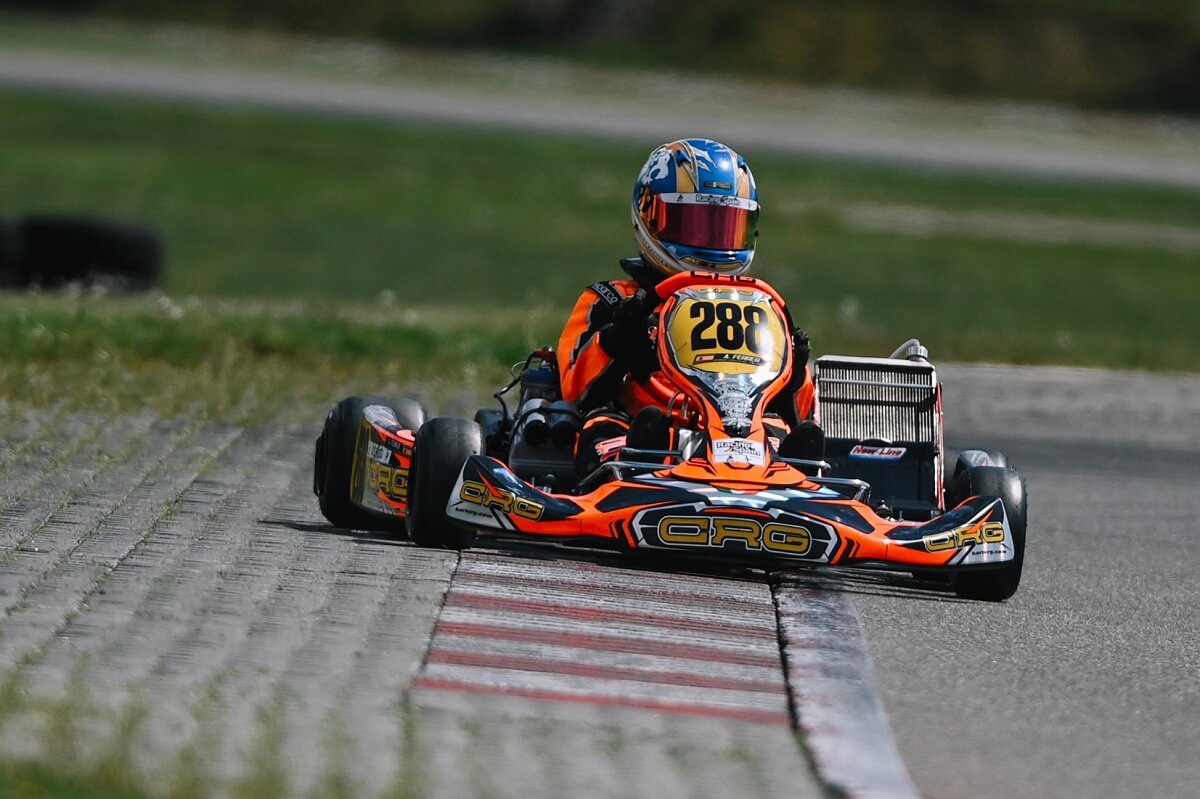
A good FFSA-approved neck brace wraps around the base of the helmet and limits excessive neck movements in the event of an accident, thereby reducing the risk of serious cervical injuries. It also helps reduce neck muscle fatigue during long sessions by supporting the weight of the helmet in high-speed corners.
📝 Note: choose a karting-specific approved model (avoid auto/motorcycle neck braces not approved for karting).
📍 Knee Pads and Elbow Pads
Additional protections made of memory foam or soft shells, they are worn under the suit. Not mandatory, they are appreciated by some drivers to prevent bruising. In karting, knees can hit the steering wheel, steering column, or fuel tank during an accident or even on aggressive kerbs, and elbows (especially the right one) can hit the engine or other chassis elements.
Proper knee pads significantly reduce impacts, and elbow pads protect your arms from possible knocks. Optional, they effectively complement the driver's protection, whether in leisure or competition, and are particularly useful with a powerful kart or on an uneven track to avoid bruises and joint pain 🤕
ℹ️ In summary, even if optional for adults, rib protector, neck brace, knee pads and elbow pads provide real safety and improve driving comfort, especially with a 2-stroke kart.
📍 Balaclava and Other Useful Accessories
Among the practical accessories, the balaclava (under-helmet) in fabric is a valuable, though optional, addition. It is worn under the helmet and improves comfort by absorbing perspiration. A balaclava thus limits sweat infiltration into the inner pads, keeping your head dry and extending the helmet’s lifespan.
In the same spirit, a technical T-shirt and technical pants (breathable and without prominent seams) bring real comfort. They help regulate temperature: in summer, they wick away perspiration and prevent overheating; in winter, they serve as a first insulating layer that retains warmth. These technical, lightweight, and close-fitting undergarments also make it easier to put on and take off the suit 🙂
Finally, remember earplugs to reduce engine noise, which can continuously exceed 100 dB. Simple hearing protection reduces noise-related fatigue and helps you stay focused, a valuable asset for long sessions or intense driving days 🥵
Gear up for karting in the rain ☔
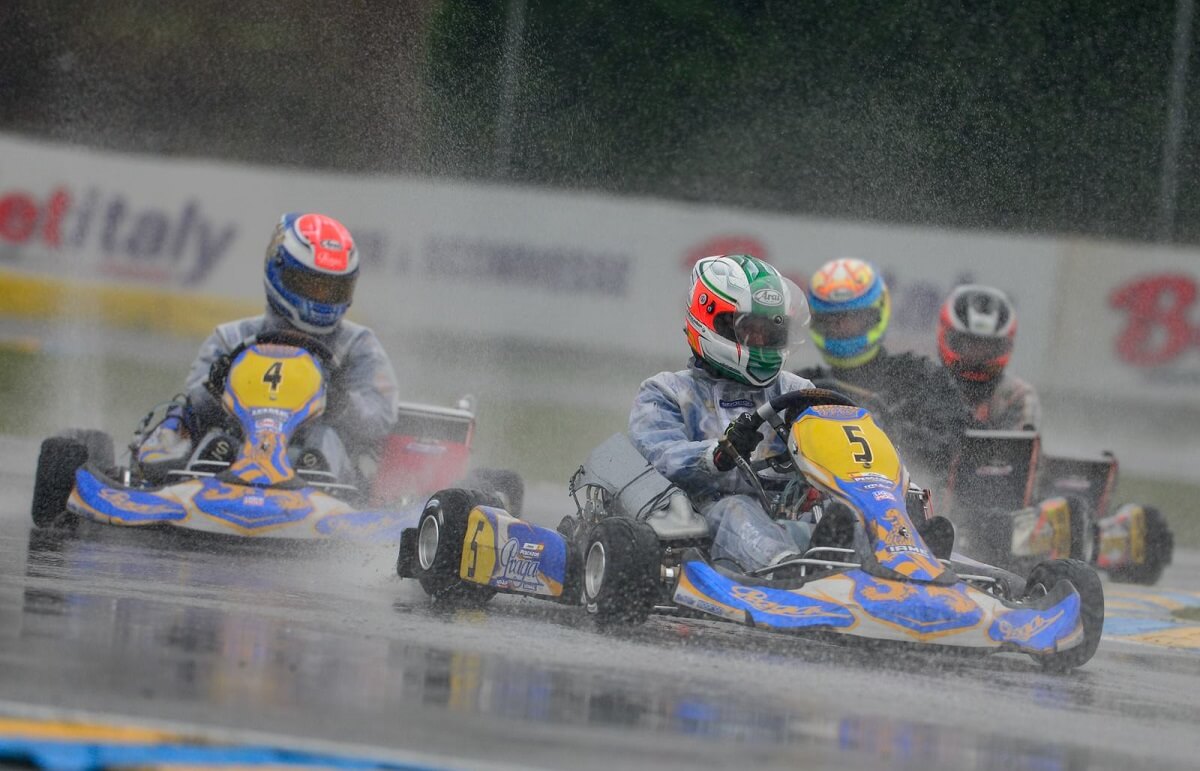
Since the weather can be unpredictable, every driver should anticipate wet conditions by having the right gear. Driving in the rain is possible and even a great learning experience, as long as you’re well protected. Here’s the essential rain kit for any kart driver 💪
📍 Rain suit
This is a waterproof suit worn over your karting suit. Fully sealed, it keeps you dry and shields you from cold wind and splashes when the track is soaked 🌧️
Rain suits (Sparco, Alpinestars, OMP, etc.) generally feature elastic cuffs and ankles plus waterproof zippers to prevent any water intrusion. A well-fitted over-suit will also keep your main suit from getting heavy with water. Don’t hesitate to put it on as soon as rain threatens, because driving soaked can quickly lead to loss of focus (not to mention the extra weight of a waterlogged suit 🙃).
📍 Rain boots or overshoes
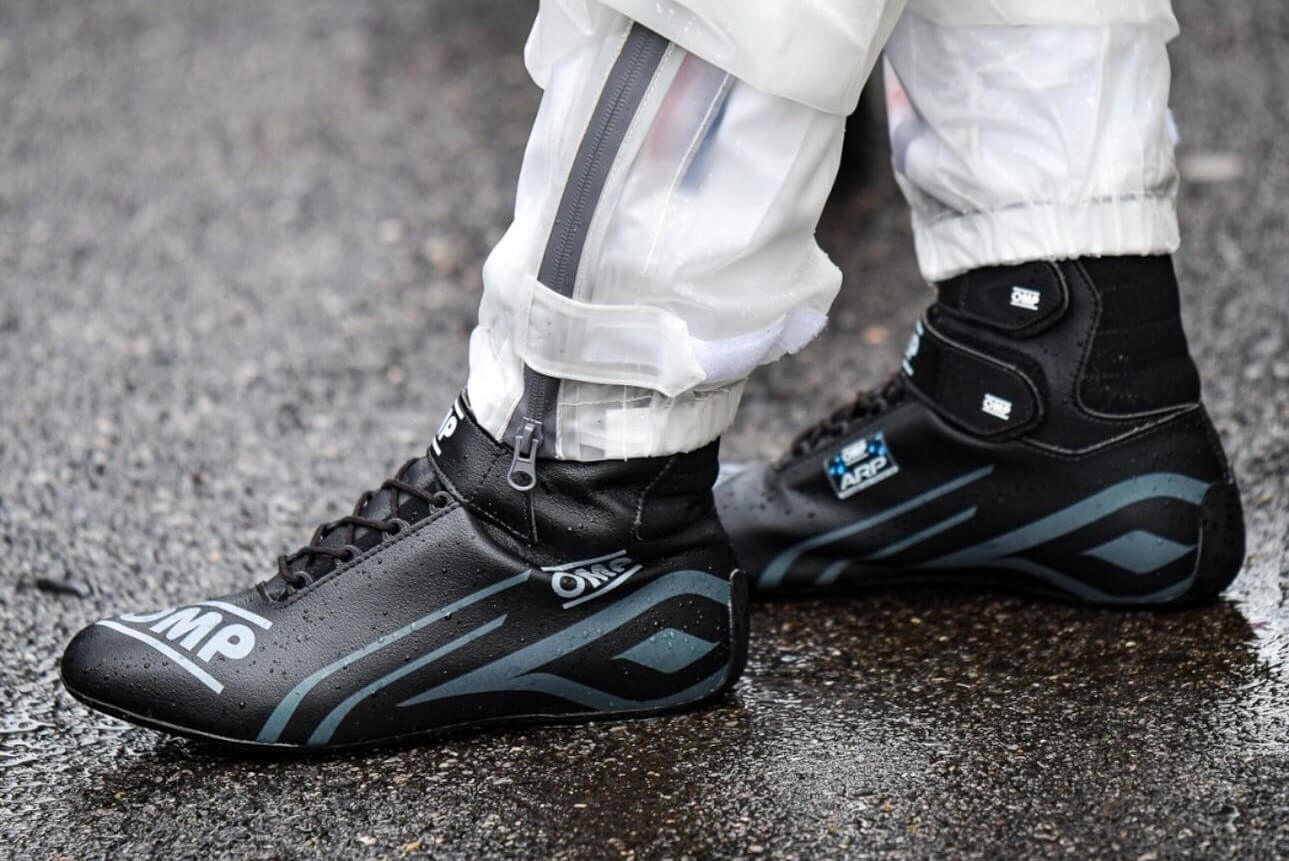
There are two ways to keep your feet dry when karting in the rain. Waterproof overshoes are true shoe covers made of thick plastic or latex that slip over your kart boots. They prevent water from getting inside when it runs down your suit. Rain boots, on the other hand (see photo above), are directly waterproof and are worn like regular kart boots without extra protection.
In any case, the goal is the same: keep your feet dry and warm to maintain good pedal feel and avoid numbness. Some drivers make do with simple plastic bags, but purpose-made rain boots or overshoes remain much more practical and durable 💪
📍 Rain gloves
While your regular kart gloves can do the job, there are gloves specially designed for wet-weather driving. They use water-repellent materials and have reinforced grip on the palms (often with latex or rubber) to ensure maximum traction even when soaked. If you plan to drive often in wet or cold weather, investing in a pair of rain gloves can improve comfort. At the very least, bring a second pair of dry gloves so you can change after each wet session.
📍 Rain visor and anti-rain treatments
Visibility is the main challenge in wet conditions. Two complementary solutions can help.
First, you can use visors or anti-rain treatments. It is strongly recommended to treat your helmet visor with a water-repellent product such as Rain-X. This spray creates an invisible film on the visor that makes raindrops bead and slide off instantly, greatly improving your vision in heavy rain. Applying Rain-X (or an equivalent) before heading out on a wet track has become second nature for many drivers, as it is essential for a clear view in the rain. Don’t forget to use an anti-fog product inside the visor or keep it slightly open to prevent condensation 💦
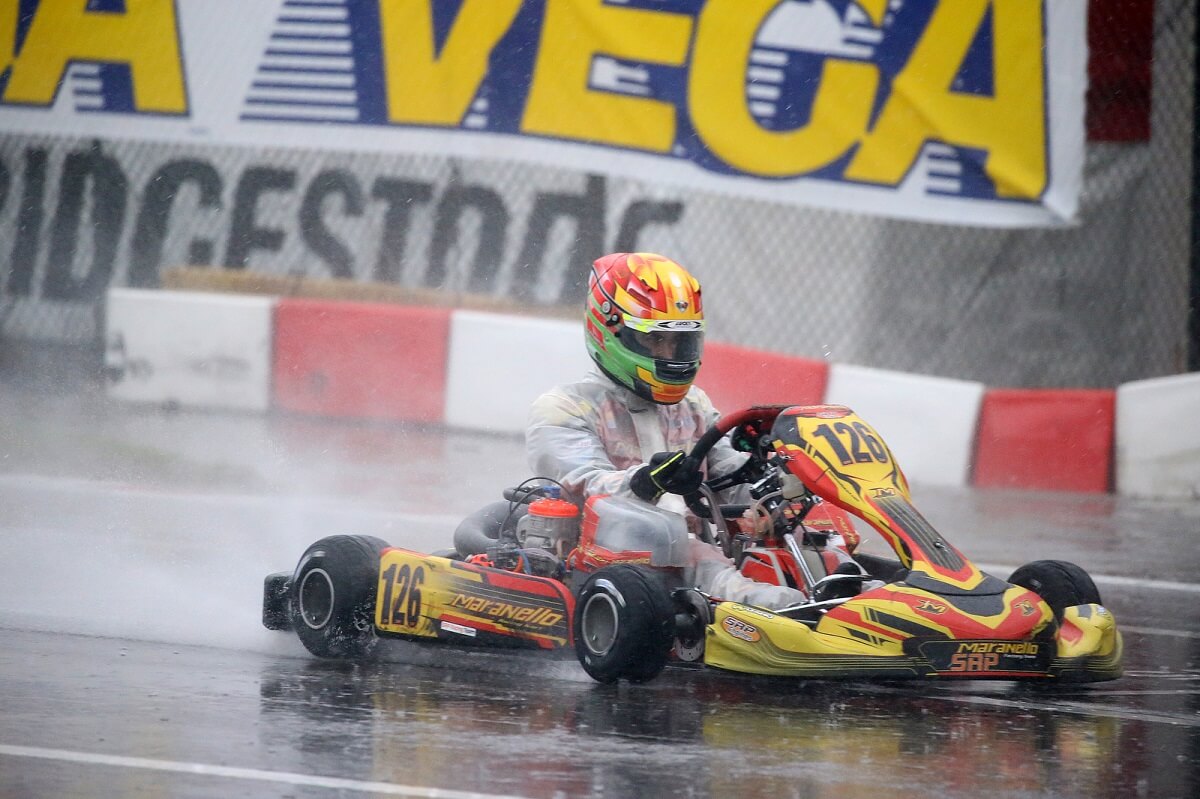
In short, driving in the rain requires proper gear but is absolutely manageable and can even be very instructive. With a good rain suit, overshoes, appropriate gloves, and a well-prepared visor, you’ll be able to keep driving safely in wet weather without ending up soaked or freezing. While these rain items are optional in dry conditions, they become essential as soon as the track is wet—so be sure to add them to your driver kit 😉
➡️ Need to gear up? Everything you need is available at the ORECA shop 😉
Kart transport
There are several ways to transport a kart, depending on your vehicle, budget and how often you go out, each with its pros and cons.
📍 Kart trailer
A trailer is one of the most common options. A small flatbed trailer is enough for a kart. It offers great flexibility: you can load the kart without major disassembly. If the trailer has storage space (trunk, integrated box), you can also carry tools, tires, etc. With a simple flatbed, there is no closed space, but at least the towing vehicle’s trunk remains free for gear 👍

Many leisure drivers choose an open utility trailer for its modest cost and versatility. A closed trailer, on the other hand, protects the kart from bad weather and prying eyes, but is more expensive and heavier. In both cases, make sure the width remains reasonable (about 1.50 m to fit the kart and storage) and that your car has a hitch capable of towing the total weight.
The trailer suits those who have a hitch and storage space. It’s ideal if you don’t want to dirty or clutter your main vehicle. On the other hand, maneuvering and parking with a trailer can be awkward in cities or if you lack space. It requires registration and dedicated storage: an investment to consider.
➡️ See all trailer listings on GoToTheGrid 😉
📍 Van or utility vehicle (converted or not)
From small compact vans to large panel vans, this type of vehicle is very popular for transporting a kart. Medium models like the Renault Trafic, Peugeot Expert or Volkswagen Transporter already offer ample space. Larger vans such as the Fiat Ducato, Peugeot Boxer, Citroën Jumper or Mercedes Sprinter allow you to load one or more karts without disassembly, with room for all the gear 🥳
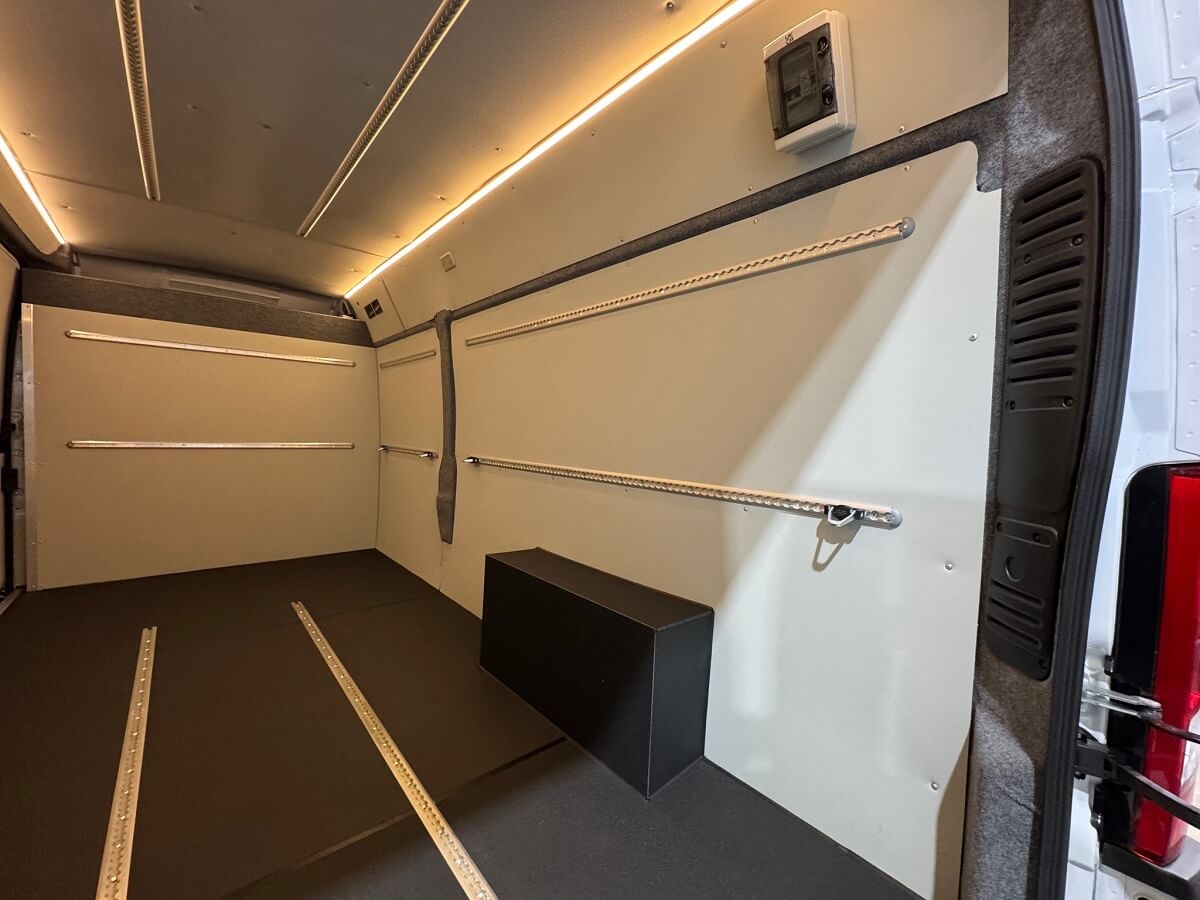
A combo van refers to a two-seater van (front cabin + rear cargo area) ideal for carrying a kart and accessories safely under cover. Even a compact utility like a Citroën Berlingo or VW Caddy can hold a Rotax Max (125 cc) kart, but you will almost always need to remove the wheels and often some bodywork, or place the chassis diagonally. This dismantling and reassembly can quickly become inconvenient if you drive frequently 😩
The advantage of a van is that it can serve as a mobile workshop and covered paddock, offering a protected working space. However, it’s generally a second vehicle to buy, insure and maintain, worthwhile mainly if you drive regularly or need it for other activities.
💡 Practical tip: always secure the kart and gear with straps attached to tie-down points. Wedge heavy items and, if the kart has no wheels, place chocks or wooden blocks under the chassis to prevent slipping and protect the floor.
📍 MPV or station wagon
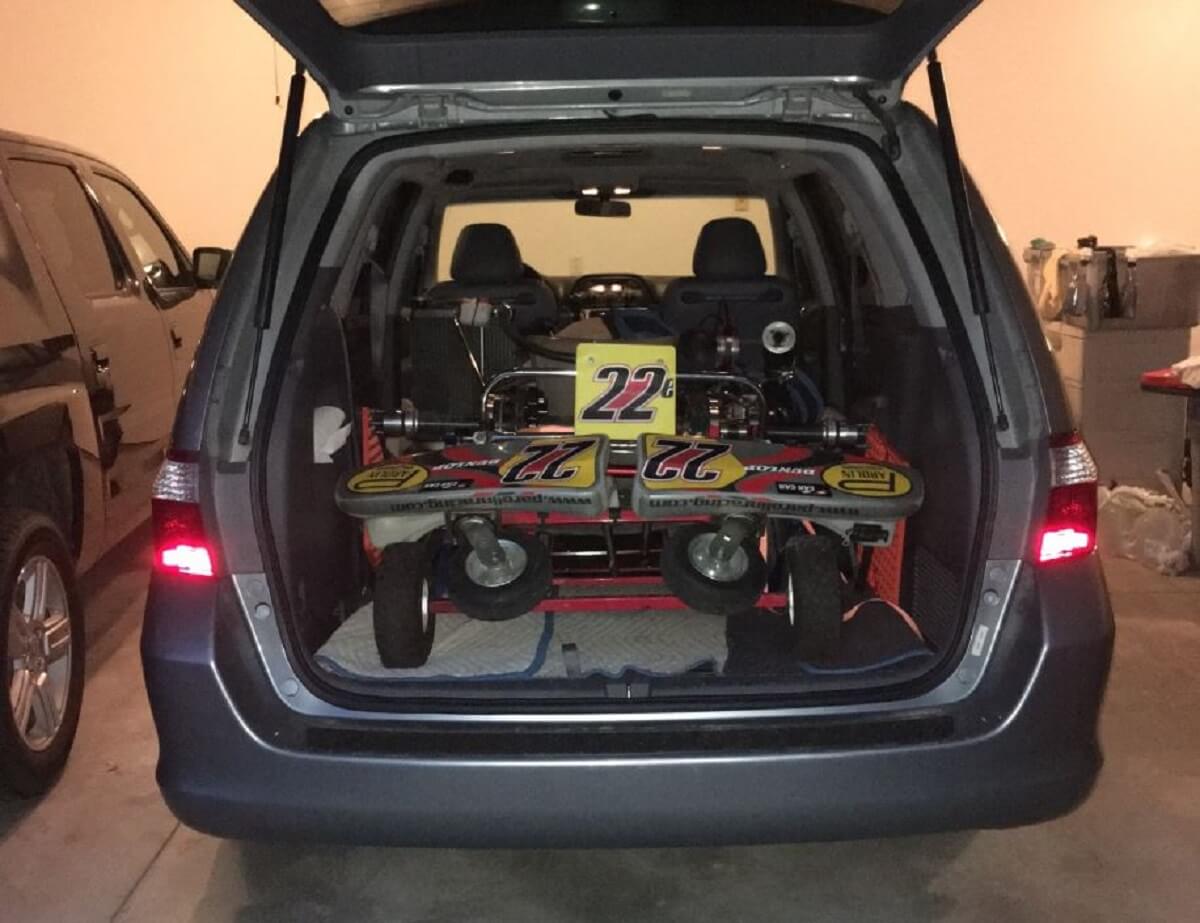
A large MPV or station wagon/SUV may suffice, but you will almost always need to remove all four wheels, sometimes the seat or engine. Loading is more physical than with a trailer or van and is hard to do alone. Protect the interior well (tarps or sheets) and monitor the rear tire pressure, as the kart’s weight can stress the suspension.
📍 Transporting the kart on a roof rack
This is a backup solution, sometimes used for very short trips when you have neither trailer nor van. The idea is to strap the kart to strong roof bars. In practice, this remains restrictive and risky. You need to lift about 70–80 kg, which requires at least two people, and remove as many parts as possible (wheels, engine, side pods) to reduce weight and wind resistance 💨
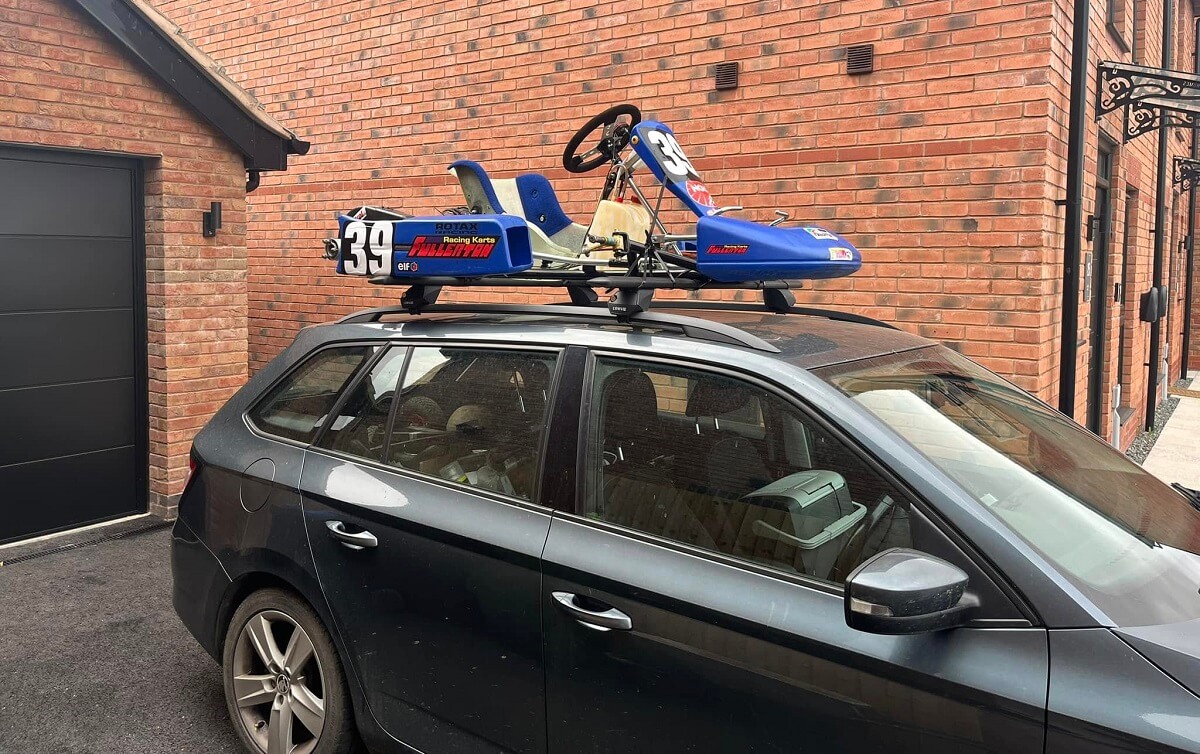
Even stripped, a kart remains bulky. It must be secured with several strong straps, protecting the roof with a blanket to avoid scratches. On the road, drag increases fuel consumption, the higher center of gravity reduces stability, and you must be careful with gates, parking garages and bridges: the vehicle height easily exceeds 2 m.
👉 Consider only as a last resort, for very short distances and at low speed, while checking the straps regularly.
📍 Other solutions
A pickup truck (Ford Ranger, Toyota Hilux, etc.) can also carry a kart in its bed. This method, common in the United States but less so in France, makes loading easy and allows you to secure the kart by its wheels without major disassembly, provided the bed is at least 1.80 m long. The drawback is the size and cost of a pickup, which is not very practical for everyday use.
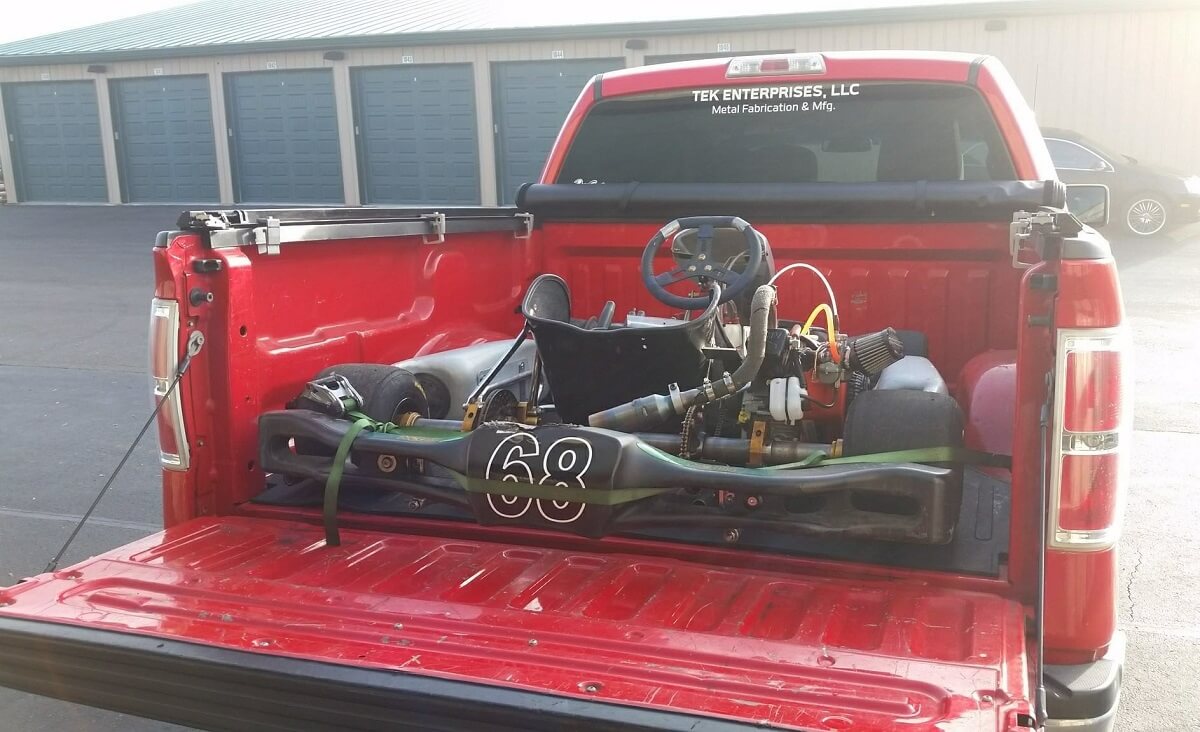
Best practices to secure the kart during transport 🤗
Whatever your means of transport, the key is to securely tie down the kart and equipment to prevent any movement:
- Use quality ratchet straps, ideally four, looping them over the wheels or chassis without tightening to the point of deforming it.
- Chock the kart with wooden blocks or old tyres so it doesn’t rest solely on its free-rolling wheels.
- If you’re short on space and carry it upright, drain the tank, remove the front bumper if needed and strap it firmly to a support.
- Remove bulky items (wheels, sidepods, bumpers, even the engine) if this eases loading and stow them securely.
- Protect the floor and walls of the vehicle or trailer with a tarp, and cover the kart in case of rain or debris.
- On a trailer, ensure good weight distribution, around 10% on the tow ball, and secure anything that could move.
- Adapt your driving: brake smoothly, take wider turns, drive at moderate speed and check the straps after a few kilometres.
Regulations to follow (France) 📜
Transporting a kart must comply with the Highway Code rules:
- The load must be securely fastened so it doesn’t move or obscure the number plate or lights.
- Respect legal dimensions: maximum width 2.55 m and watch overall height if the kart is on the roof.
- With a trailer PTAC ≤ 500 kg, the vehicle’s plate is enough; beyond that, the trailer must have its own registration and plate.
- The category B licence covers most cases (up to 750 kg or a car + trailer combination ≤ 3,500 kg), but B96 training or a BE licence may be required for heavier combinations.
- Check the presence and correct operation of lights, indicators, reflective triangles and the safety chain or cable depending on whether the trailer is braked or not.
- Make sure your insurance policy covers towing and, if necessary, the trailer or the goods carried.
Express checklist before departure
- ✅ Kart secured with at least two ratchet straps.
- ✅ Number plate and lights visible and working.
- ✅ PTAC/PTRA and licence compliant.
- ✅ Hitch locked, pin and safety chain or cable in place.
- ✅ Car/trailer tyres inflated and in good condition.
- ✅ Insurance (and registration certificate if > 500 kg) up to date.
Essential equipment and tools for the kart 🧰
Owning a kart requires a minimum of maintenance gear to prepare the kart, perform setup adjustments and deal with mechanical contingencies. Here is the checklist of essential equipment to have for running a 2-stroke kart.
📍 Kart trolley (stand)
Indispensable once on site, a trolley lets you set the kart at working height for maintenance and move it easily around the paddock. There are several models, from the simplest to drive-up lever trolleys that make loading the kart easier without help.
ℹ️ Choose a sturdy model suited to your kart’s weight.
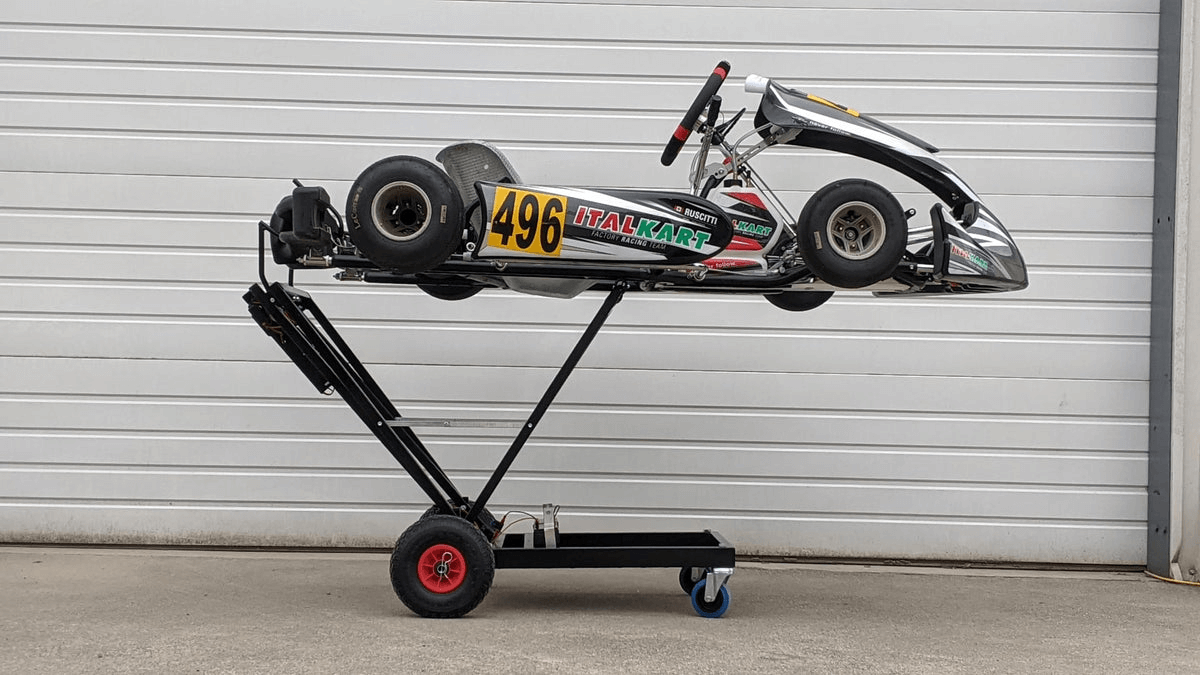
📍 Floor protection tarp with absorbent mat
Mandatory in many races or practice days, this tarp protects the ground from hydrocarbon leaks. Drivers must use an absorbent mat of a minimum size of 1.50 m x 1.90 m under the kart to prevent petrol or oil stains on the ground. Make sure the tarp/mat is properly positioned in your work area to respect the environment and circuit regulations 😉
📍 Fuel and 2-stroke mix
Bring a metal jerrycan of about 10 L to carry fuel – circuits often require metal, homologated cans for safety reasons.
If your engine is a 2-stroke, take a quality 2T engine oil and a graduated measuring cup to prepare the petrol/oil mix in the correct proportions. A graduated pouring jug with spout and a filter funnel help refuel cleanly, avoiding spills or impurities in the tank.
📍 Basic toolbox
A set of mechanical tools is needed to strip, adjust or repair your kart. The main tools to have include a set of open/combination spanners (common sizes: 8, 10, 13, 17 mm, and 19 mm), a set of Allen keys (hex) from 3 to 10 mm, some sockets with ratchet (8, 10, 13, 17, 19, 22 mm), as well as flat and Phillips screwdrivers (including a short-handle stubby for carb screws).
Add a side cutter, a slip-joint plier, a hammer and a rubber mallet – with these basic tools you can handle most routine jobs (spark plug change, adjustments, chain tension, etc.). Don’t forget the spark plug spanner for your engine, which lets you replace the plug quickly if needed 😎
📍 Specific tools and maintenance equipment
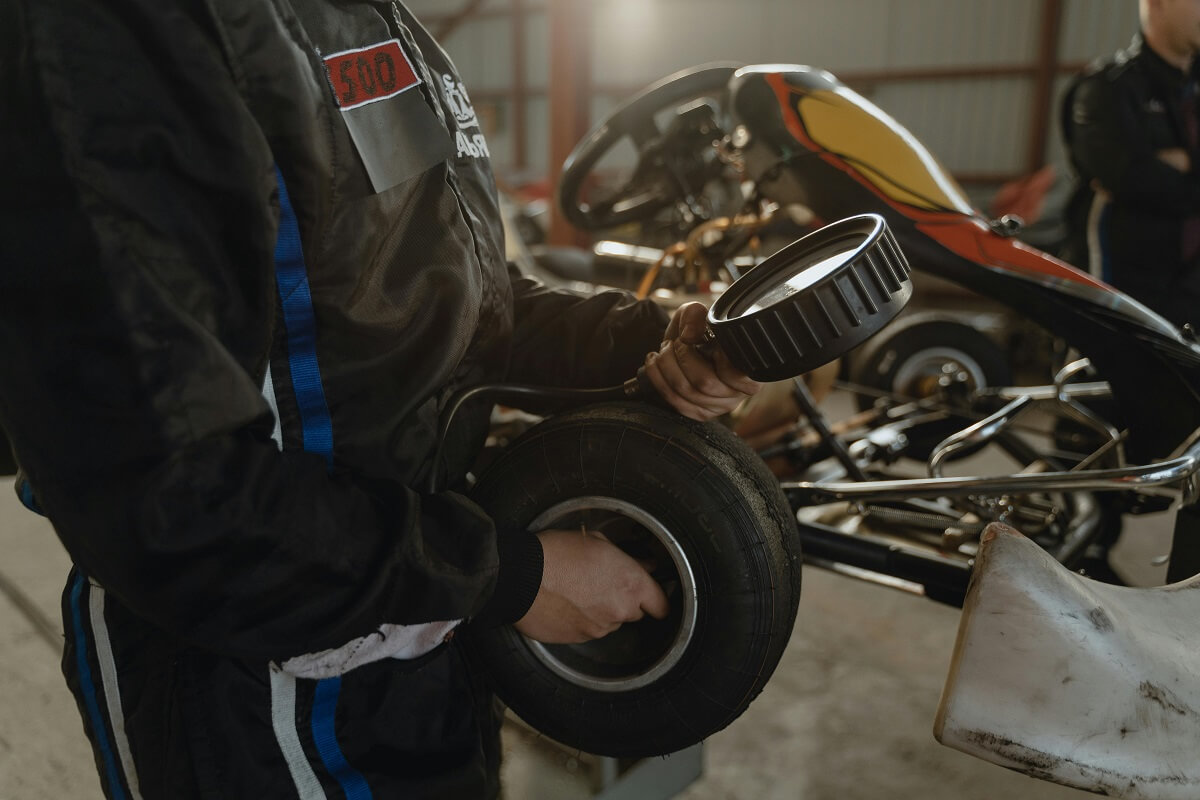
In addition to general tools, certain specialised tools make a kart owner’s life much easier. For example, a foot pump or a mini-compressor to inflate tyres at the track, along with a precision gauge (accurate to ±0.05 bar) to check tyre pressures to a tenth ⏲️
A manual tyre changer (lever or press) is useful if you need to change tyres yourself, as is a valve core tool to remove the valve mechanism and balancing weights to fine-tune wheel balance.
For driveline maintenance, bring a sprocket puller and a sprocket lock tool to change the engine sprocket without damaging parts (essential to loosen the sprocket nut) 🛠️
A straight edge (ruler) or a laser alignment system is also handy to check front toe. If you race or want to hone performance, you can add a torque wrench (to tighten bolts to the exact recommended torque) and a pyrometer to measure tyre temperatures after runs. These last two tools remain optional for leisure use but are very useful to analyse the kart’s behaviour in detail.
Finally, think about keeping things tidy in the paddock: always use an absorbent mat under the kart (see above) and, if you handle liquids (fuel, oil, brake fluid, etc.), bring a drip tray to contain any spills and drip-proof funnels to avoid dribbles.
📍 Consumables and small items
Carry an assortment of common nuts and bolts matching your kart (a few spare nuts, bolts and washers in frequent sizes, e.g. M5, M6, M8). Cable ties (zip ties) and cloth gaffer tape are essential to fasten or temporarily repair just about anything.
It’s wise to also have some medium threadlocker (blue Loctite type) to secure screws subject to vibration – apply it to the threads of critical fasteners to prevent them loosening while driving.
For maintenance products, pack a multi-purpose penetrant/lubricant spray (e.g. WD-40) to lube moving parts or ease disassembly, a chain lube to grease the transmission after each session, and a brake cleaner to degrease the braking system and discs.
Take some rags and microfibre cloths to wipe parts and keep gear clean (microfibres are ideal for bodywork, regular rags for mechanical parts). Also consider a pair of disposable nitrile gloves and some hand-cleaning gel so you can clean up after wrenching 🧼
📍 Essential spare parts
Even if your kart is in good condition, never go out without a few basic spare parts.
The undisputed number one is a spare spark plug: take one or two (the correct model for your engine), along with the spark plug spanner so you can swap it on the spot easily.
Also bring a spare drive chain or, at the very least, a spare master link – kart chains are heavily stressed and can snap at any moment. Take one or two rear sprockets in different sizes as well as an engine sprocket, to adjust gearing to the circuit or replace a damaged part.
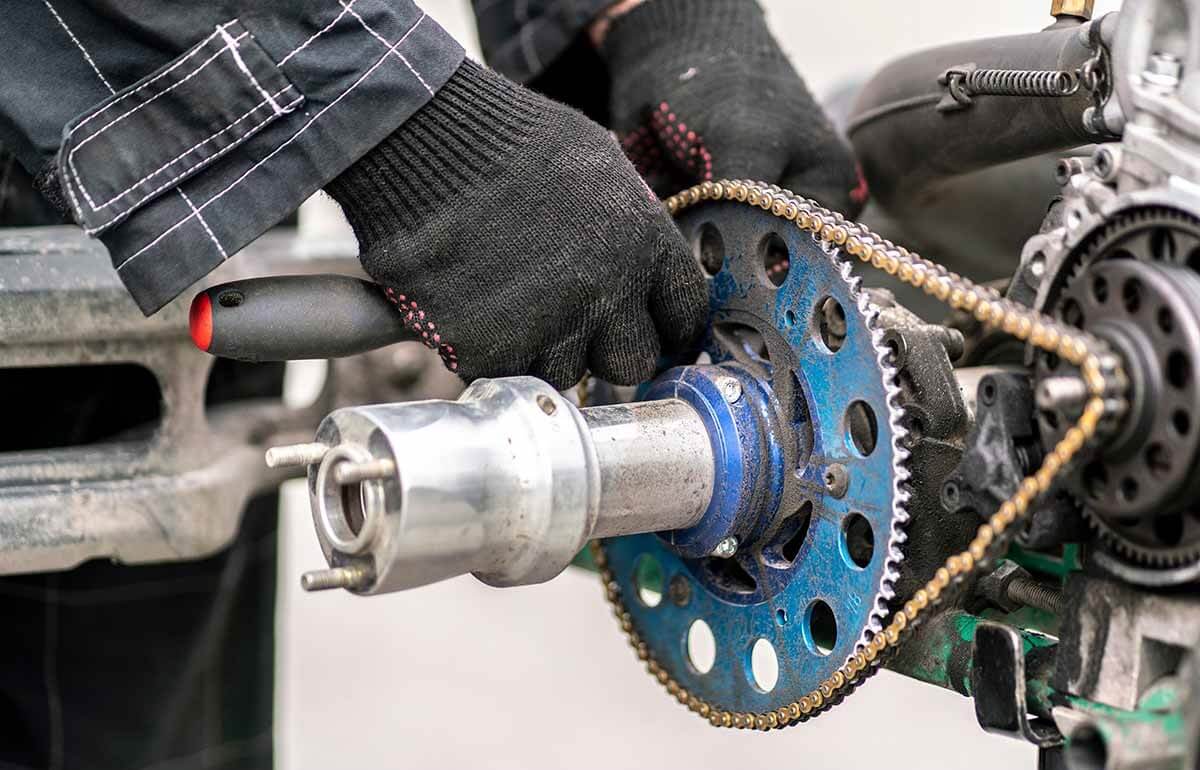
A set of carburettor jets (main jet, even idle jet) in several sizes is recommended to adjust fuelling to weather or altitude – this mainly concerns 2T engines with adjustable carburettors.
Don’t forget small split pins or circlips either (for example for the brake pedal pin, wheel axles, etc.), as these tiny parts can get lost or pop out and sideline the kart if you don’t have spares.
Also take a length of spare fuel hose: a crack or leak can stop you cold, and a simple new hose often gets you going again immediately.
On the tyre front, always have a set of slicks and a set of wets ready to go. An extra set of slicks is handy in case of a puncture or rapid wear, while a set of wets lets you keep running if the weather suddenly turns.
Finally, budget permitting, you can pack a few additional wear parts to cover more serious failures: for example new brake pads, a spare throttle and clutch cable, or even a new piston (for 2T engines, in case of a seizure) to save a compromised track day. These pricier items aren’t mandatory for occasional leisure use, but regular drivers often keep them to hand as a precaution.
📍 Mechanic’s gloves
To work on the kart safely and cleanly, take a pair of mechanic’s gloves (or thick nitrile gloves). Gloves protect your hands from burns (hot engine, exhaust) and cuts, while keeping them free from grease and chemicals. They’re part of the recommended PPE in the paddock alongside safety glasses and earplugs, and should be worn whenever handling fuel or noisy tools. Choose gloves thin enough to keep dexterity, yet durable. At the end of the day, your hands will thank you! 👏
Every item on this list will help ensure karting sessions without nasty surprises. With the right gear and organisation, you can focus on driving with peace of mind, ready to handle any technical hiccup. Enjoy your laps! 🔥
Karting: all the gear for a practical, well-organised paddock
For a smooth day in the pits, aim for simple and useful: a folding canopy (if no box), a folding table and chairs to work and take a break, drinks, snacks and spare clothes to stay comfortable.
For timing and safety: a lap timing system (Alfano, MyChron…), an on-board camera to analyse your lines, a 2 kg fire extinguisher and a first-aid kit.
Power and light: some auxiliary lighting (LED bars, headlamp) and, depending on the circuit, a portable power station or a waterproof extension reel to power compressor, chargers and tools.
Little extras that make a big difference: a battery charger (starter/accessories), a marker pen to date your tyres, and a jerrycan of clean water for hands and rinsing parts.
With these basics, your paddock stays compact, clean and efficient, so you can focus on what matters most: driving 🥳
Conclusion
In karting, preparation makes all the difference. Good equipment, secure transport and a complete kit guarantee stress-free sessions. This checklist helps you forget nothing, whether for fun or competition. All that’s left is to load the kart and enjoy every lap.
🔗 PS: The complete printable PDF checklist is available here 📋

